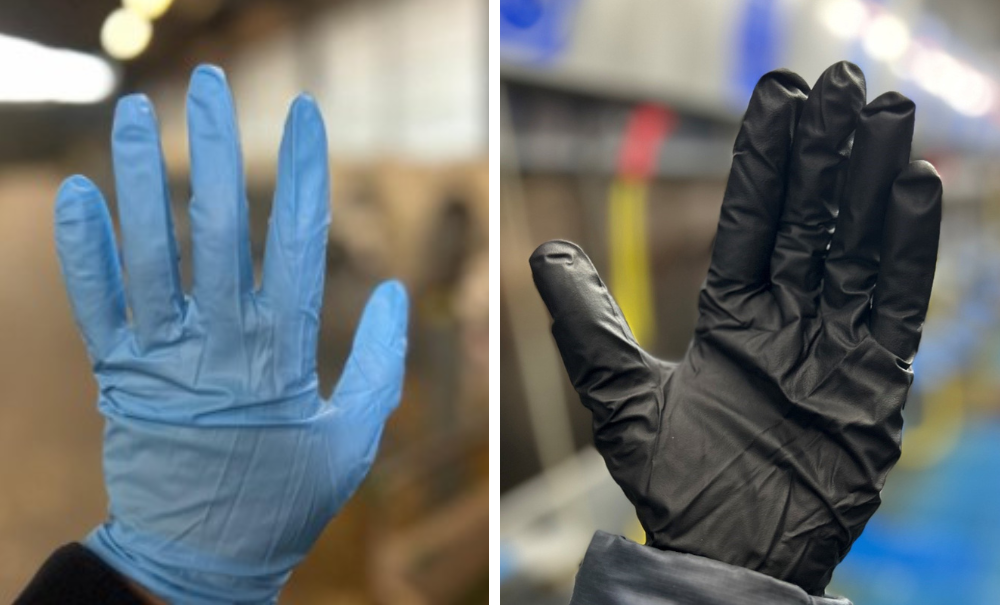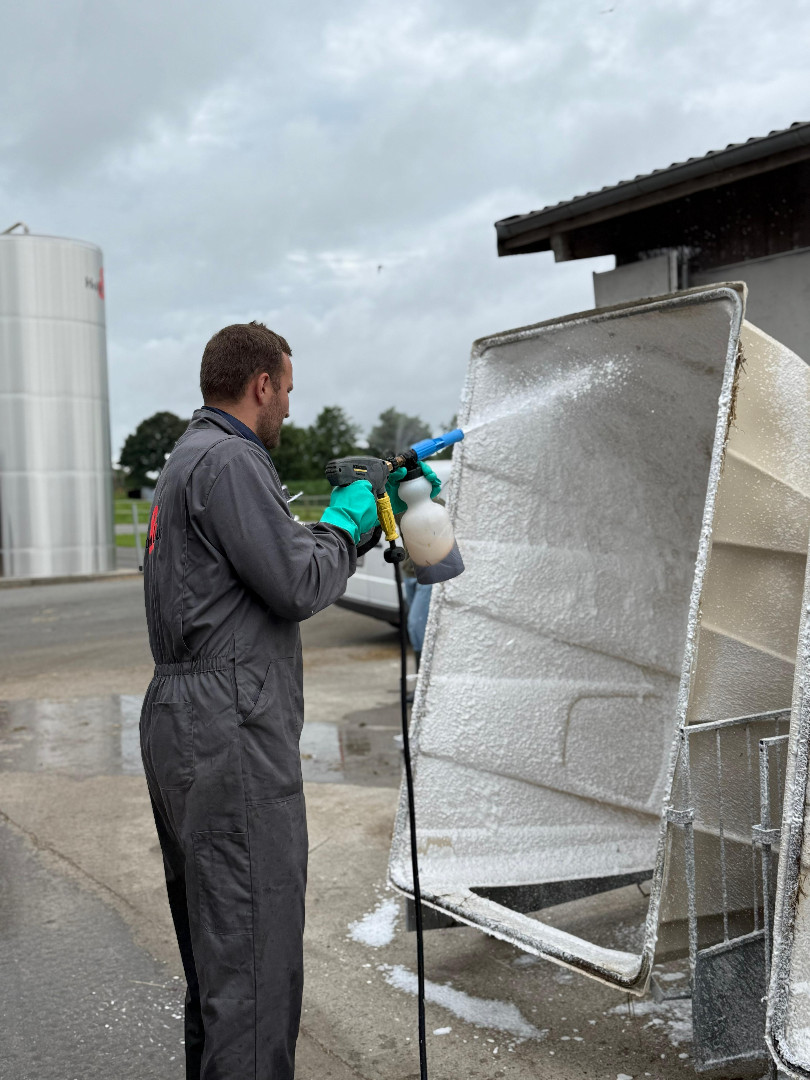‘No, I'm not drinking from that cup!’ – Hygiene in calf feeding
9. Oktober 2025 — Immunisation, Calf management — #Colostrum #CanWash #EimiWash #FlushMaster #Hygiene #Management #Feeding bucketWhether it's a dirty coffee cup, a colostrum jug or a calf bucket – we would all immediately say:
‘No, I'm not drinking from that cup as long as it's so dirty!’
But this is exactly what happens to our calves on many farms every single day. Feeding buckets and milk churns are often not cleaned as thoroughly as they should be. The result is that newborn animals are given milk that is already heavily contaminated with bacteria.
This can be fatal, especially in the first few days of life. This is because calves need all their energy for growth and building up their immune systems – not for fighting off unnecessary pathogens.
This article is about
Why is hygiene so important for calves?
- Newborn calves are extremely susceptible to pathogens.
- They are born without an immune system.
- Every contact with microorganisms means stress for their immune system.
- Energy used to fight off pathogens is not available for growth.
➞ Cleanliness is therefore not a luxury, but a basic precondition for healthy calves.
Research shows just how quickly the bacterial count can increase.
A study conducted at the South Westphalia University of Applied Sciences several years ago showed how dramatically the bacterial load in colostrum can increase. Milk straight from the udder is relatively clean, with approx. 800 CFU/ml. The number in a colostrum jug rises to 320,000 CFU/ml. This corresponds to a factor of 400. Ultimately, 600,000 CFU/ml was found in the teat bucket – almost 800 times the initial value.
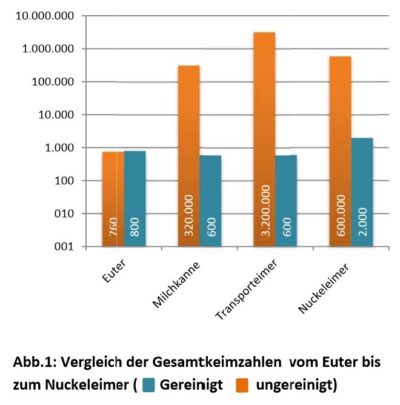
- Direct from the udder: approx. 800 CFU/ml – a very low level of bacteria.
- In the colostrum jug: up to 320,000 CFU/ml – a factor of 400.
- In the transport container up to 3,200,000 CFU/ml – a further 10-fold increase.
- In the teat bucket: up to 600,000 CFU/ml – a factor of nearly 800.
And it got worse: coliform bacteria and enterococci suddenly appeared in the containers. They do not come from the milk, but are signs of faecal residues. A sure sign that transport containers and buckets are not being cleaned properly.
The problem is that these germs block the absorption of antibodies (immunoglobulins) in the gut. Antibodies also fight these microorganisms, meaning that fewer IgGs enter the bloodstream and the calf has poorer immunity later on.
Common weak points in the barn
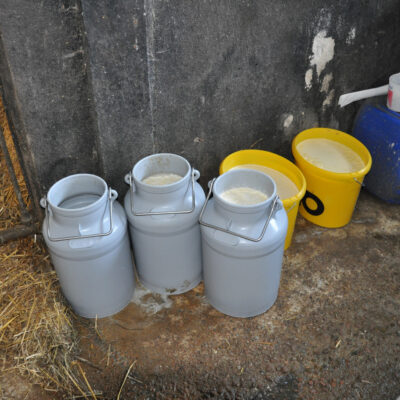
- Feeding buckets & teats: these are often only rinsed perfunctorily because it is very time-consuming.
- Milk churns: these are used for different types of milk (colostrum, milk containing cells and milk containing antibiotics).
- Separation buckets in the milking robot: uncooled and open, they make ideal breeding grounds.
- MilkTaxis: cleaning is postponed or carried out incompletely.
Practical tips for improved hygiene
1. Create clear structures.
- Different colours for milk churns in the milking parlour. For example:
- green for valuable colostrum,
- yellow for milk containing cell cultures, which can be fed after pasteurisation, and
- red for milk containing antibiotics, which is discarded.
2. Make use of technology instead of scrubbing with brushes.
- MilkTaxis have a flushing function (FlushMaster):: buckets can be rinsed using a flushing nozzle, as in the catering industry. However, be careful, as the cleaning solution deteriorates over time and the result remains suboptimal.
- Clean milk churns with CanWash in the milking parlour.
- Teats and valves: dismantle regularly and wash in the MilkTaxi using the normal cleaning programme.
- Bucket washing machines (e.g. EimiWash): clean 4 buckets including teats in just 2 minutes – up to 100 items an hour.
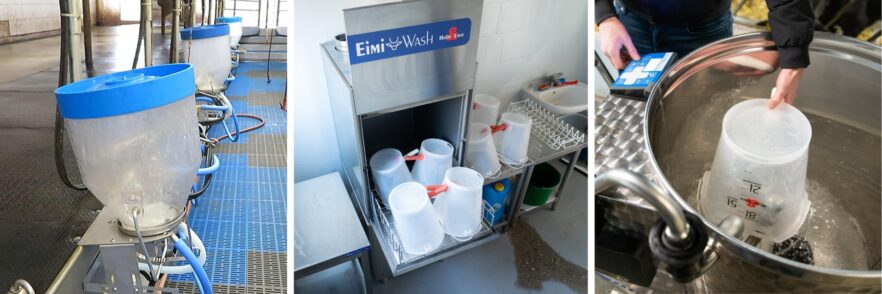
3. Pasteurise milk
- Pasteurising milk is also a sensible hygiene measure. Pasteurisation kills any germs in whole milk, thereby preventing the transmission of pathogens to the calf. Follow this link to learn more about pasteurisation.
More than just buckets: personal and barn hygiene
However, hygiene does not stop at the bucket. We humans also introduce germs into the calf barn. Hygiene sluices are already standard in poultry and pig farming. So why not with calves too?
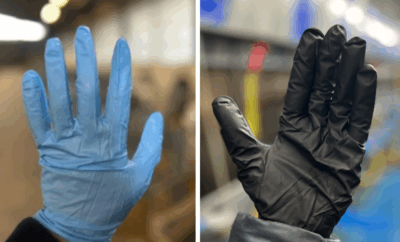
Possible measures:/h6>- Change or disinfect shoes (set up disinfection trays).
- Wear clean clothing (if necessary, use different overalls in the calf barn).
- Wear gloves – preferably in different colours: black for milking, blue for the calves. This makes it easy to notice immediately when something gets mixed up.
Cleaning calf hutches properly
Finally, a word about cleaning calf hutches and pens.
Pressure washers are both a blessing and a curse. When used in calf barns, it not only removes dirt from the floors and walls—it also spreads it throughout the entire barn with its spray mist.
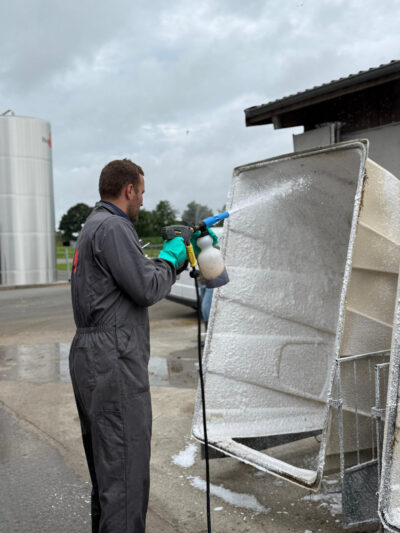
The following cleaning routine is better:
- You need a washing area for the calf hutches. Hutches should not be cleaned in the barn or next to other calves, but in an open space.
- First, brush away any manure and clean the surfaces (floor and walls).
- Apply foam cleaner to the entire surface of the hutches.
- Allow the cleaning agent to work for 30 minutes. Dirt, germs, and cryptosporidium oocysts are dislodged during this time.
- Wash off the foam and loosened dirt with low pressure (preferably with a water hose).
- Finally, use the pressure washer once more to remove any remaining residues. The spray mist is now virtually uncontaminated.
- Allow the huts to dry completely, as the disinfectant can only work optimally on dry surfaces.
- Then apply the disinfectant in accordance with the manufacturer's recommended concentration and in sufficient quantity. This often leaves the surfaces dripping wet again.
Realistic expectations
A clinically sterile environment is neither realistic nor sensible in a calf barn. Calves should be exposed to the germs on a farm – but only in moderation.
Ask yourself the following questions:
- Would I drink this milk?
- Would I drink from this bucket?
- Would I sit down at the dining table with my hands and shoes in this state?
- Would I lie down in this pen to sleep?
You are on the right track if you can answer ‘yes’ to all of these questions.
The biggest challenge now is for every person in charge to implement the hygiene measures within their operational team. Even the best hygiene plan will not work if just one member of the team fails to comply with it.
Conclusion: hygiene pays off
Clean buckets, cans, and feeding systems are an investment in healthy and productive calves.
- Less sickness,
- Increased growth and
- A more pleasant workplace.
Tip: Listen to our podcast on this topic:
Advice for all customers in Schleswig-Holstein
Holm & Laue Milchhygiene offers farmers in Schleswig-Holstein special advisory services on all hygiene issues relating to cows and calves.

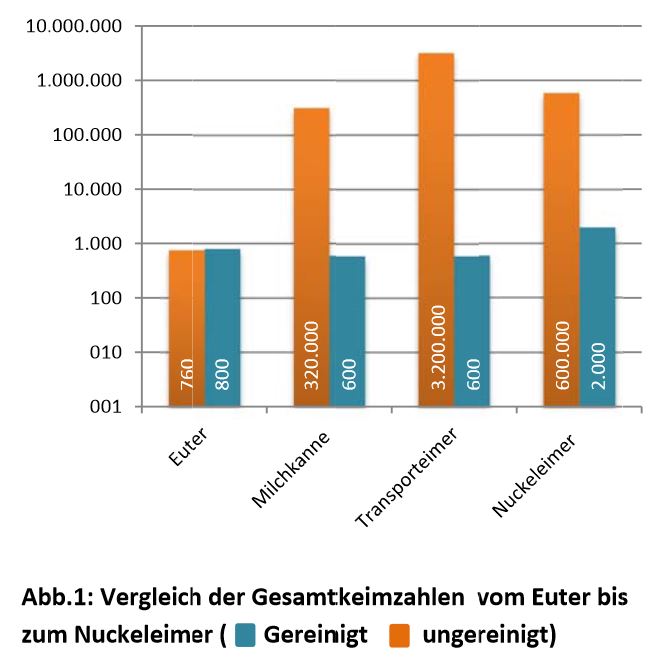
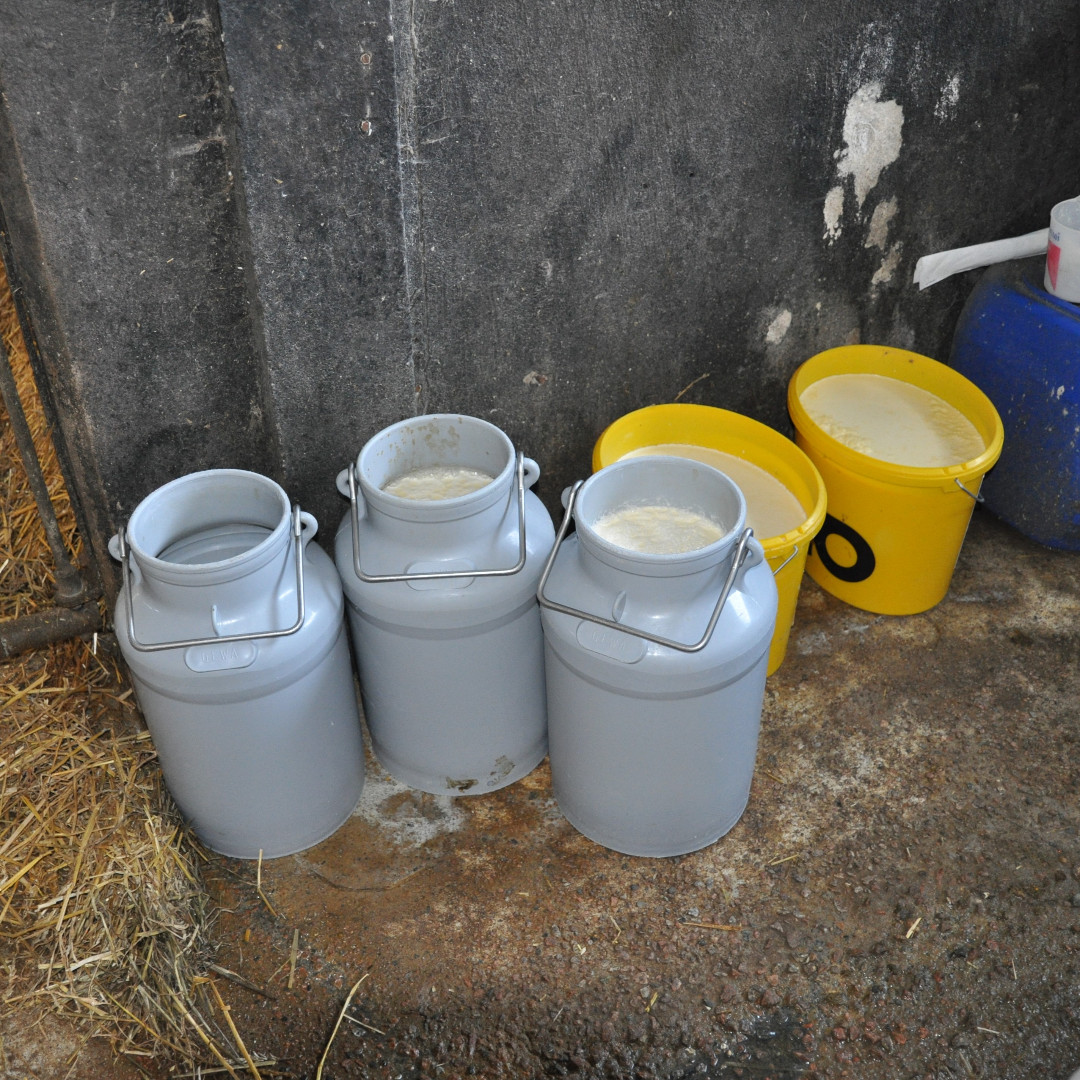
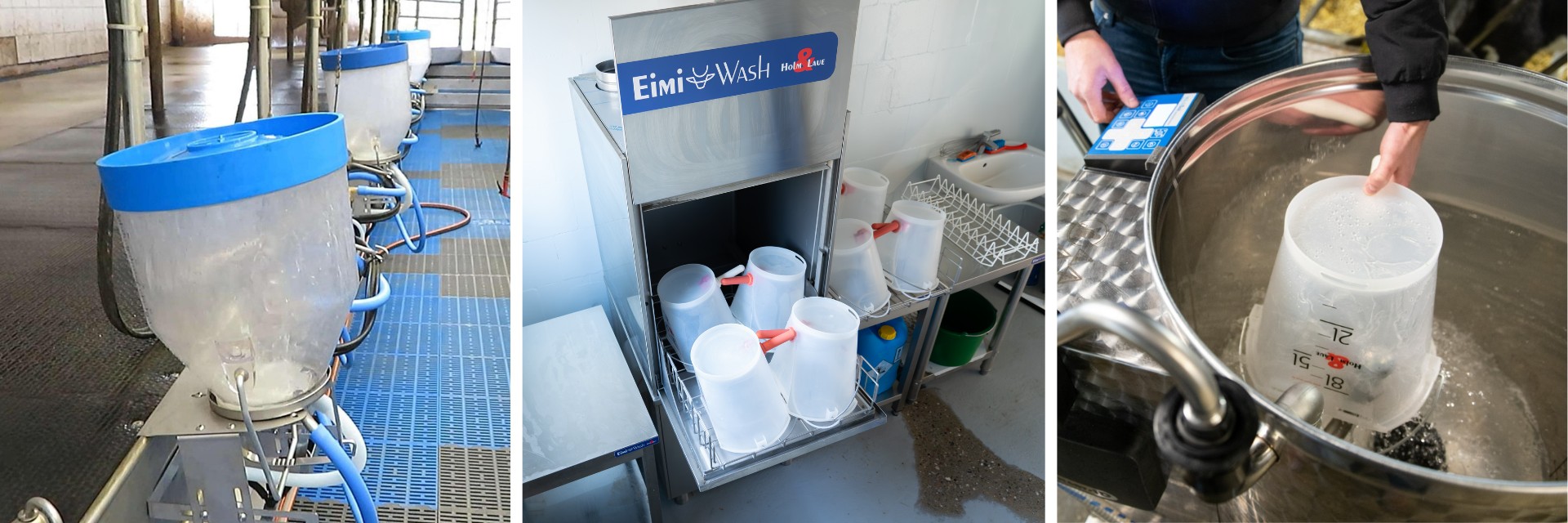 CanWash – EimiWash – FlushMaster
CanWash – EimiWash – FlushMaster
